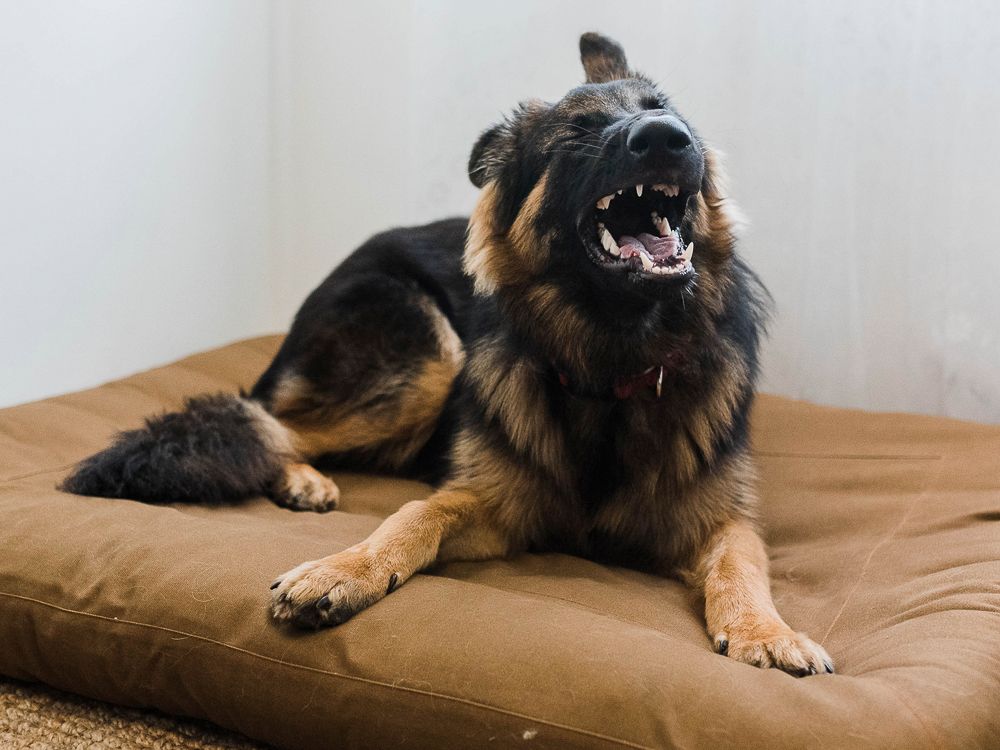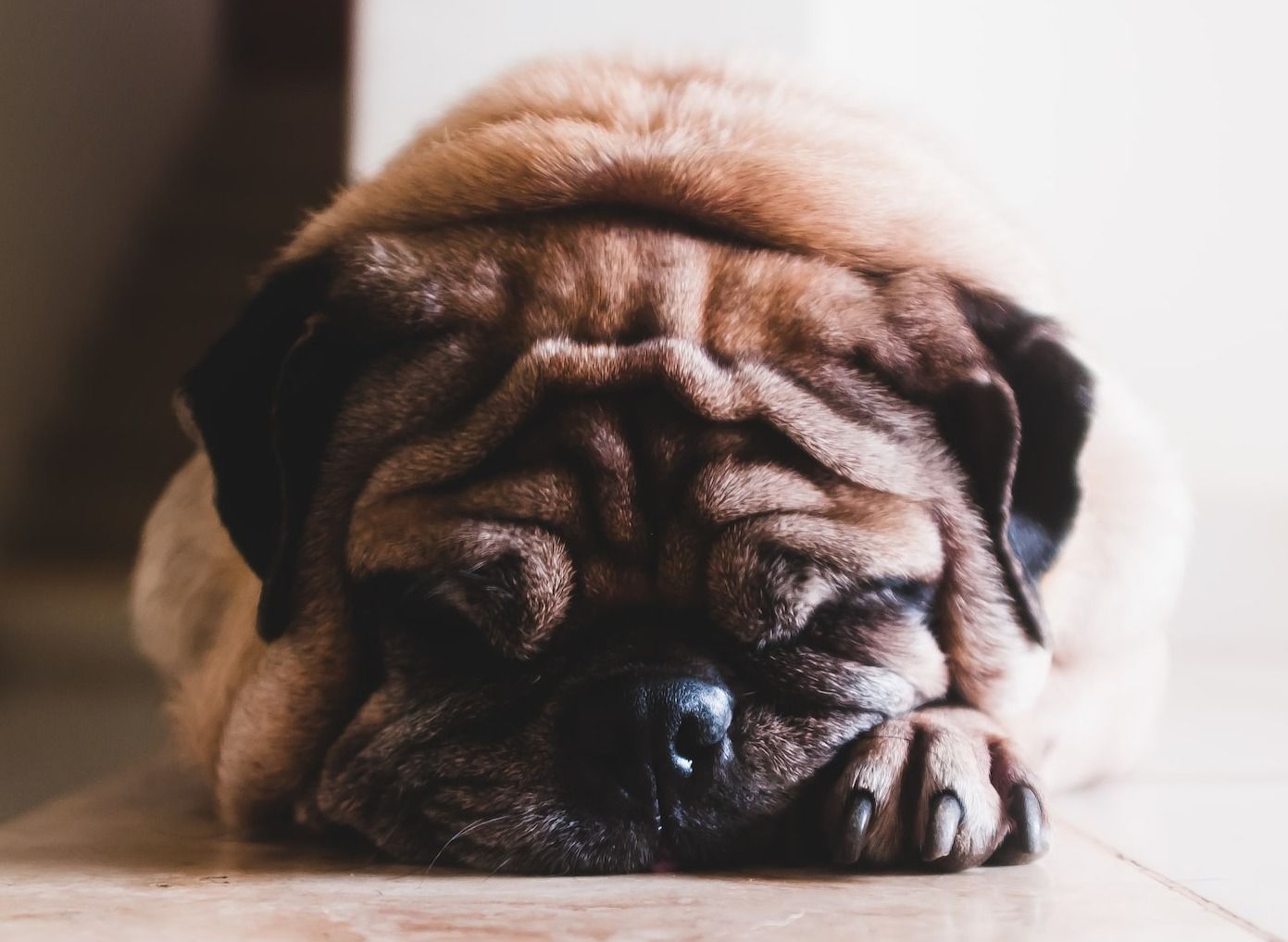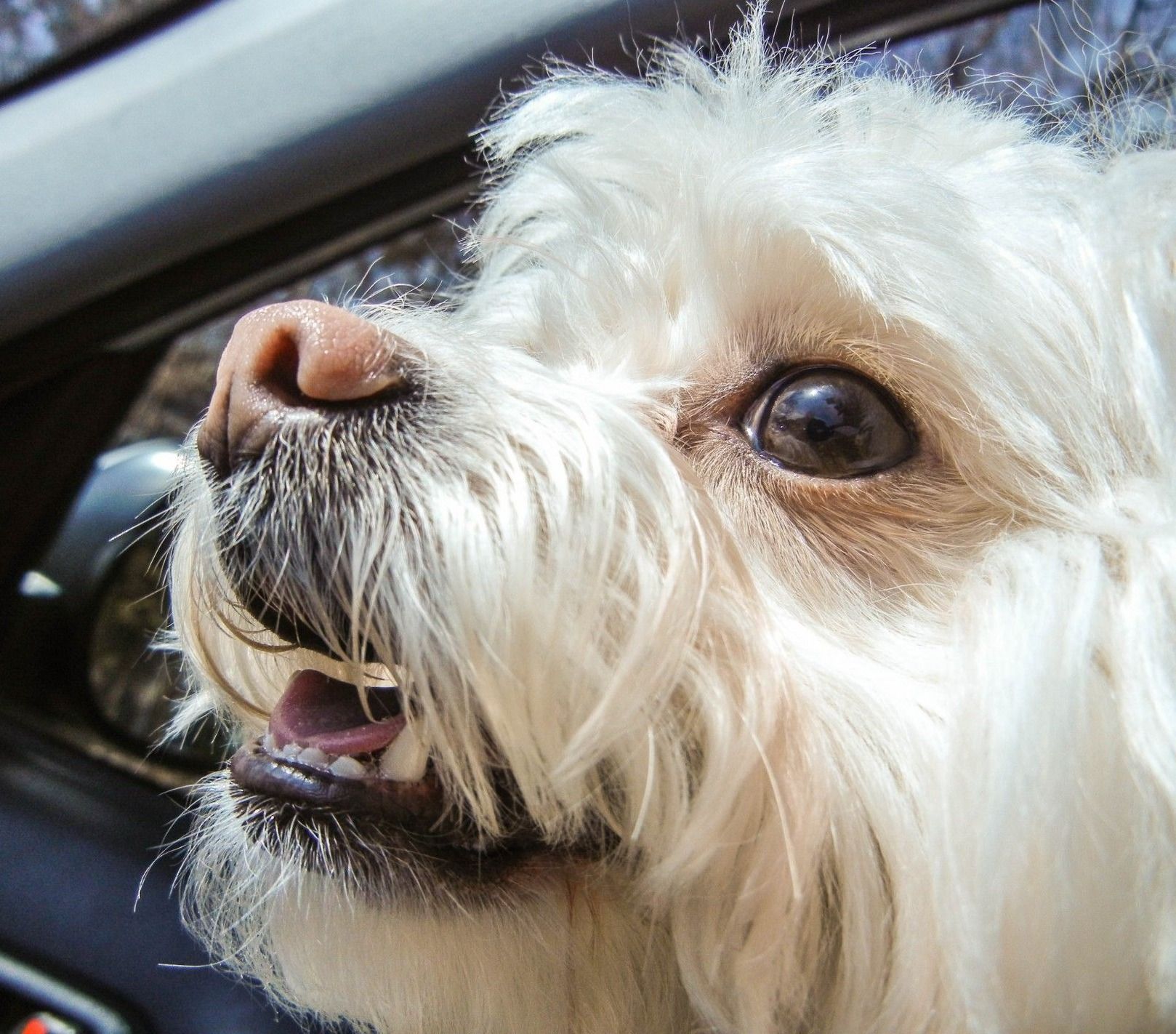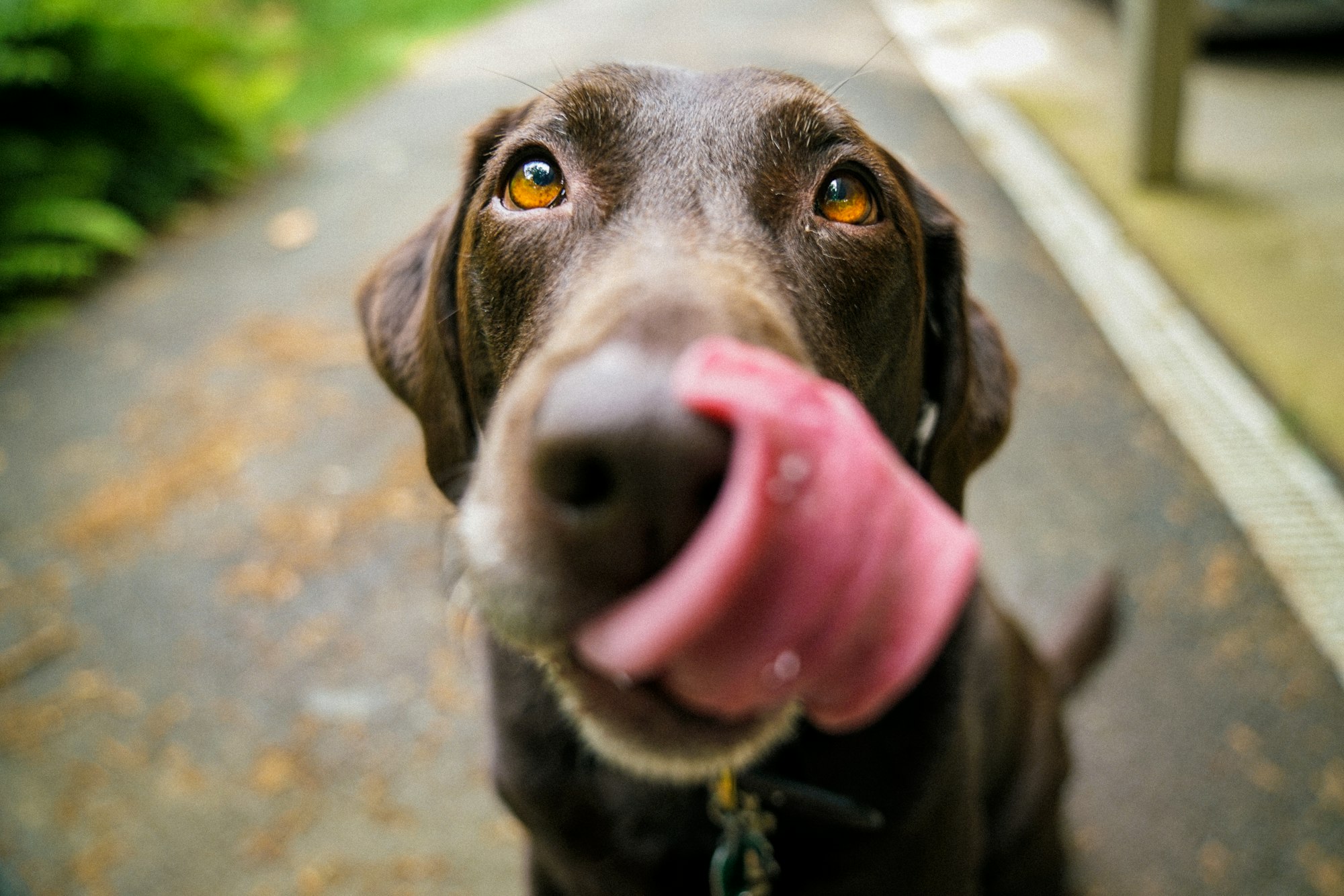Skip to main contentPostsDraft - SavedPreviewPublish
Reverse sneezing in dogs can be alarming, but it's important to know what it is and how to handle it. This respiratory event is characterized by sudden, rapid inhalations, often accompanied by snorting-like sounds. It can be triggered by irritants, excitement, or infections. Symptoms include loud snorting, rapid breathing, and short episodes. During an episode, stay calm, soothe your dog by gently rubbing their throat, and offer a bit of water. If reverse sneezing is frequent or accompanied by other concerning symptoms, consult your vet. Preventive measures include minimizing allergens, keeping your dog calm, and maintaining respiratory health. Understanding reverse sneezing ensures your dog's well-being.

What is Reverse Sneezing in Dogs?
Reverse sneezing in dogs is a brief and harmless respiratory condition characterized by sudden, rapid inhalation and snorting sounds. It occurs due to nasal or throat irritation and may happen during excitement or exposure to irritants like pollen or dust. While it may seem concerning, reverse sneezing is generally not a serious health issue for dogs. Offering a calming environment, a gentle throat massage, or a sip of water can help during episodes. Frequent or prolonged instances should prompt a vet visit. Understanding reverse sneezing ensures your dog's comfort and well-being.
What Causes Reverse Sneezing in Dogs?
Curious about what triggers reverse sneezing in dog? Let's explore the factors that can induce this fascinating phenomenon. From irritants and allergies to moments of excitement or overstimulation, we'll uncover the various causes behind reverse sneezing in our four-legged friends. We'll dive into the role that nasal infections can play in this peculiar respiratory response.
Irritants and Allergies
When it comes to irritants and allergies in dogs, they can both play a significant role in reverse sneezing. Here are some important points to consider:
- Irritants: Dogs can experience reverse sneezing when they are exposed to common irritants such as dust, pollen, mold, smoke, chemicals, and strong odors. These irritants can cause inflammation in the dog's nasal passages, leading to the reverse sneezing reflex.
- Allergies: Similar to humans, dogs can also have allergies that result in reverse sneezing. Certain substances like pollen, dust mites, specific foods, and even certain medications can trigger allergic reactions in dogs. These reactions can cause the dog's airways to constrict, resulting in episodes of reverse sneezing.
- Prevention: To minimize the risk of reverse sneezing caused by irritants and allergies, it is important to identify and reduce exposure to potential triggers. Maintaining a clean living environment for the dog, using air purifiers, and avoiding strong chemicals or fragrances can help decrease irritants. For dogs with known allergies, collaborating with a veterinarian to determine specific allergens and implementing proper management strategies is crucial.
A true story:
Amy, a Labrador Retriever, started experiencing frequent episodes of reverse sneezing during springtime. Sarah, her owner, noticed that Amy's symptoms worsened when they went for walks in the park. After seeking guidance from a veterinarian, Sarah discovered that Amy had developed allergies to certain types of grass and pollen. To alleviate the effects of irritants and allergies, Sarah began taking Amy for walks in different areas and made sure to clean her paws after outdoor activities. Sarah also started using air purifiers in their home and regularly washed Amy's bedding to reduce exposure to potential triggers. These changes had a significant impact, as Amy's episodes of reverse sneezing decreased in frequency and severity, allowing her to enjoy walks and playtime without any discomfort.

Excitement or Overstimulation
During episodes of reverse sneezing in dogs, excitement or overstimulation can trigger the condition. When dogs become excessively excited or stimulated, it can cause irritation to their soft palate, leading to reverse sneezing. This is particularly common in small and brachycephalic breeds, such as Bulldogs and Pugs.
Excitement or overstimulation can induce spasms in the muscles of the dog's throat, resulting in the distinctive snorting and snuffling sounds of reverse sneezing. Dog owners should be aware of their pet's triggers and take steps to minimize their exposure to them.
Preventing reverse sneezing triggered by excitement or overstimulation involves creating a calm environment for your dog. Avoid loud noises, excessive play, or sudden movements. Regular exercise and training can help maintain balanced energy levels. During an episode, stay calm, gently rub your dog's throat, and offer a sip of water for relief. While reverse sneezing is usually harmless, consult your vet if it becomes frequent or severe to rule out underlying health issues and determine the best management strategy.
Nasal Infections
Nasal infections in dogs, which are a common cause of reverse sneezing, can occur due to various factors such as bacteria or viruses. It is important to promptly identify and treat these infections to alleviate discomfort for your furry friend.
The symptoms of nasal infections in dogs may include persistent sneezing, nasal discharge, congestion, and difficulty breathing. Your dog may also show signs of discomfort, such as pawing at their nose or rubbing it against surfaces.
To address nasal infections in dogs, it is essential to consult with a veterinarian. They will be able to diagnose the specific infection and prescribe appropriate treatment, which may include antibiotics or antiviral medications. Adhering to the prescribed treatment plan is important to ensure effective clearance of the infection.
Preventing nasal infections in dogs involves maintaining a clean living environment free from potential sources of infection. Regular cleaning of your dog's nose, a balanced diet, and exercise to boost their immune system are essential. Promptly addressing nasal infections is crucial for your dog's well-being. Consult your veterinarian for diagnosis and treatment to manage infections and prevent complications.
What are the Symptoms of Reverse Sneezing in Dogs?
If you've ever wondered what's up with those strange snorting noises coming from your furry friend, you're not alone. In this section, we'll uncover the telltale signs of reverse sneezing in dogs. From the loud snorts that catch everyone's attention to the rapid inhalation and exhalation that can leave both you and your pup puzzled, we'll explore the symptoms that accompany this peculiar canine phenomenon. Get ready to dive into the weird and wonderful world of reverse sneezing with your four-legged companion!
Loud Snorting Noises
During a reverse sneezing episode, one of the symptoms that you may observe in your dog is loud snorting noises. These noises, which can be quite alarming, occur due to the rapid inhalation and exhalation that happens during a reverse sneezing episode. It may sound like your dog is struggling to breathe, but it is usually not a cause for immediate concern.
To help your dog during a reverse sneezing episode, it is important to stay calm and provide comfort. You can gently rub their throat to soothe and relax them, which can alleviate the symptoms and bring them some relief. In addition, offering a small amount of water can help moisten the throat and potentially stop the reverse sneezing.
If your dog experiences frequent or prolonged episodes of reverse sneezing, or if they are showing other concerning symptoms, it is advisable to consult with a veterinarian. They can evaluate your dog and determine if there are any underlying causes or conditions that need to be addressed.
Pro-tip: If you notice loud snorting noises during a reverse sneezing episode in your dog, remember to remain calm and provide comfort. Gently rubbing their throat and offering a small amount of water can help alleviate the symptoms. However, if the episodes become frequent or prolonged, it is best to seek veterinary advice for further evaluation and guidance.

Rapid Inhalation and Exhalation
During a reverse sneezing episode in dogs, there is rapid inhalation and exhalation that occurs. Here are some steps to take during this episode:
- Stay calm and do not panic. Your dog can sense your emotions, and remaining calm will help them calm down as well.
- Gently rub your dog's throat. This can help soothe the irritation caused by rapid inhalation and exhalation and provide some relief.
- Try to interrupt the episode with a small amount of water. Offering your dog a few sips of water can help alleviate the episode by triggering a swallowing reflex along with rapid inhalation and exhalation.
Pro-tip: It's important to remember that reverse sneezing in dogs is usually harmless and resolves on its own. If your dog experiences frequent or prolonged episodes of rapid inhalation and exhalation, it's advisable to consult with a veterinarian to rule out any underlying health issues.
Episodes Lasting for a Few Seconds to a Minute
During a reverse sneezing episode in dogs, the symptoms typically last for a few seconds to a minute. Here are some key points to know about episodes of this duration:
- The episode begins suddenly and may seem alarming to pet owners.
- The dog may make loud snorting noises during the episode.
- Rapid inhalation and exhalation occur, giving the appearance of gasping for breath.
- The episode usually resolves on its own within a short period of time.
To help provide a better understanding, here is a true story about reverse sneezing in dogs:
I have a small Pomeranian named Max who occasionally experiences episodes lasting for a few seconds to a minute. One day, while playing in the park, Max suddenly began reverse sneezing. I was initially worried, but I knew from previous experience that it would pass quickly. I gently comforted him by speaking softly and rubbing his throat. Soon enough, the episode subsided, and Max resumed his playful antics.
It's important to note that while reverse sneezing episodes may seem distressing, they are generally harmless and self-limiting. If episodes become more frequent or prolonged, it's advisable to consult a veterinarian to rule out any underlying health concerns.
Remember, staying calm during a reverse sneezing episode and providing gentle comfort to your dog can go a long way in easing their discomfort.
What to Do During a Reverse Sneezing Episode?
During a reverse sneezing in dog episode, knowing how to react is crucial. Stay calm and offer comfort to your dog. Gently rub their throat to help soothe the discomfort. An effective tactic is to try interrupting the episode with a small amount of water. By understanding these strategies, you can alleviate your dog's distress and ensure their well-being during a reverse sneezing episode.
Stay Calm and Comfort Your Dog
When your dog experiences a reverse sneezing episode, it is important to stay calm and comfort them. Remember, reverse sneezing is not harmful or life-threatening to your dog, although it may appear distressing. By staying calm and providing comfort, you can help your dog feel more at ease during the episode.
During a reverse sneezing episode, gently stroke your dog's back or chest to provide a soothing sensation. Speaking to them in a calm and reassuring voice can also help them feel comforted. Avoid panicking or making sudden movements, as this may escalate their anxiety.
Staying calm and comforting your dog can help prevent any additional stress or anxiety that may exacerbate the episode. Try to create a peaceful environment by minimizing noise and distractions. Keeping a relaxed atmosphere can make it easier for your dog to recover from the episode.
Remember, if you remain calm and provide comfort to your dog during a reverse sneezing episode, it will pass more quickly. If you are concerned about the frequency or severity of the episodes, consult your veterinarian for further guidance.
True story: I once had a dog named Max who frequently experienced reverse sneezing episodes. Whenever he had an episode, I would stay calm and gently stroke his back to comfort him. Max would often lean against me for support, and I would speak to him in a soothing voice. By staying calm and providing comfort, I noticed that Max's episodes would subside more quickly, and he would continue with his day as if nothing had happened. It was a simple, yet effective way to help him through these episodes and ensure his well-being.
Gently Rub Your Dog's Throat
When your dog experiences a reverse sneezing episode, gently rubbing their throat can help alleviate their discomfort. Here are the steps to gently rub your dog's throat:
- Approach your dog calmly and speak to them in a soothing voice to reassure them.
- Position yourself beside your dog and place your hand gently on their throat, just below their jawline.
- Using a circular motion, gently rub your dog's throat lightly and slowly. Be careful not to apply too much pressure.
- Continue gently rubbing your dog's throat for a few seconds or until the reverse sneezing episode subsides.
- Observe your dog's reaction and adjust the pressure or speed of your rubbing accordingly.
- Once the episode is over, praise and comfort your dog to help them relax.
Gently rubbing your dog's throat during a reverse sneezing episode can help soothe their airways and provide relief. Remember to stay calm and try to create a comforting environment for your dog. If the reverse sneezing episodes persist or become more frequent, it is best to consult with a veterinarian to rule out any underlying health conditions or allergies.
By following these steps and providing gentle throat rubs, you can support your dog during a reverse sneezing episode and help alleviate their discomfort naturally.

Try to Interrupt the Episode with a Small Amount of Water
- To try to interrupt a reverse sneezing episode in dogs, you can follow these steps:
- Observe your dog's episode and make sure it is indeed reverse sneezing.
- Stay calm and approach your dog gently and reassuringly.
- While your dog is still having the episode, try to interrupt the episode with a small amount of water in a bowl or cup.
- Show the water to your dog, allowing them to see and smell it.
- Slowly and calmly approach your dog, offering them the water.
- Encourage your dog to take a few sips of water during the episode.
- If your dog is willing to drink the water, it may help to alleviate the symptoms of reverse sneezing.
- Continue to stay calm and provide comfort to your dog until the episode subsides.
- If the episode continues or worsens, consult with a veterinarian for further guidance.
Remember, every dog is different, and not all dogs may respond to this method. It's important to pay attention to your dog's individual needs and reactions. If the reverse sneezing episodes persist or if you have concerns about your dog's health, consult with a veterinarian for a thorough evaluation and appropriate treatment.
When Should You Be Concerned About Reverse Sneezing in Dogs?
When your dog experiences reverse sneezing, it can be concerning. Here are some situations to consider when determining if you should be concerned about reverse sneezing in dogs:
1. Frequency: If your dog occasionally experiences reverse sneezing, it is usually not a cause for concern. However, if your dog has frequent episodes, it may be a sign of an underlying issue that needs attention.
2. Duration: Reverse sneezing episodes typically last for a short period of time, ranging from a few seconds to a couple of minutes. If the episodes become prolonged or more frequent, it is recommended to seek veterinary advice to ensure your dog's well-being.
3. Associated symptoms: In most cases, reverse sneezing in dogs is a harmless condition. However, if your dog shows other signs of discomfort or distress such as difficulty breathing, coughing, nasal discharge, or lethargy, it may indicate a more serious respiratory problem. Therefore, consulting a veterinarian is highly recommended in such cases.
4. Triggers: Pay attention to any factors that may trigger reverse sneezing in your dog. Common triggers include excitement, allergies, irritants, or foreign objects. If you notice that certain triggers consistently lead to reverse sneezing, it is important to take precautions or seek professional advice to address the underlying cause.
Remember, every dog is unique, and it is important to be aware of your dog's specific symptoms and behavior. If you have any concerns or if your dog's reverse sneezing becomes more severe or frequent, consulting with a veterinarian is always advisable.

How to Prevent Reverse Sneezing in Dogs?
Reverse sneezing in dogs can be a concerning and uncomfortable experience for both pets and their owners. But fear not! In this section, we'll dive into effective ways to prevent reverse sneezing. From minimizing allergens and irritants to keeping your furry friend calm and relaxed, we'll explore practical techniques to alleviate this issue. We'll touch upon the importance of maintaining good respiratory health in dogs, ensuring their overall well-being. So, let's take proactive steps to help our canine companions breathe easy and reverse sneeze no more!
Minimize Allergens and Irritants
To minimize allergens and irritants for your dog and reduce the frequency of reverse sneezing episodes, follow these guidelines:
Keep your home clean: Regularly dust, vacuum, and mop to minimize allergens and irritants that can trigger reverse sneezing in dogs.
Avoid smoking: Secondhand smoke can irritate your dog's respiratory system, so refrain from smoking near them.
Use fragrance-free products: Many scented products like air fresheners, candles, and cleaners can contain chemicals that may irritate your dog's nose. Opt for fragrance-free options to minimize allergens and irritants.
Keep your dog away from strong odors: Certain strong smells like perfumes, chemicals, or cleaning products can trigger reverse sneezing in dogs. Avoid exposing your dog to such odors to minimize allergens and irritants.
Manage your dog's outdoor exposure: Limit your dog's time outdoors during high pollen or allergen seasons. Wipe their paws and body after being outside to remove any allergens they may have come in contact with, thus minimizing allergens and irritants.
Choose hypoallergenic bedding and toys: Some dogs may have allergies to certain fabrics or materials. Opt for hypoallergenic bedding and toys to minimize potential irritants and allergens.
Provide a clean and fresh water source: Make sure your dog has access to clean and filtered water to avoid any potential contaminants or irritants, thus minimizing allergens and irritants.
Consider a diet change: Some dogs may be sensitive to certain ingredients in their food. Consult with your veterinarian about potential dietary changes that may help minimize allergic reactions and reduce allergens and irritants.
By implementing these measures, you can create a more allergen-free environment for your dog and reduce the likelihood of reverse sneezing episodes.
Keep Your Dog Calm and Relaxed
To keep your dog calm and relaxed during a reverse sneezing episode, follow these steps:
- Stay calm yourself. Dogs are sensitive to their owners' energy, so remaining calm will help reassure your dog.
- Sit or kneel down beside your dog and offer gentle comfort by petting them softly. Physical touch can help keep your dog calm and relaxed.
- Speak to your dog in a calm and soothing voice. Use gentle and reassuring words to help keep your dog calm and relaxed.
- Try to distract your dog by redirecting their attention. You can use a favorite toy or treat to shift their focus away from the episode and keep them calm and relaxed.
- Remove any potential triggers or sources of excitement from the immediate environment. This can help prevent further episodes or lessen their intensity and maintain a calm and relaxed state for your dog.
A fact: Dogs often respond positively to a calm and relaxed environment. Keeping your dog calm and relaxed can help reduce stress and improve their overall well-being.
Maintain Good Respiratory Health
- To maintain good respiratory health, regular exercise helps to keep the respiratory system strong and healthy. Taking your dog for walks or engaging in other physical activities can improve lung capacity and overall respiratory health.
- To maintain good respiratory health, avoid smoke and pollutants. Keep your dog away from environments where there is smoke or other pollutants in the air. These can irritate their respiratory system and cause breathing difficulties.
- To maintain good respiratory health, keep the air clean. Make sure that your dog's living environment has good air quality. Use air purifiers or open windows to promote good ventilation and reduce the presence of allergens and irritants.
- To maintain good respiratory health, provide your dog with proper nutrition. Providing your dog with a balanced diet that includes essential nutrients can support respiratory health. Consult with your veterinarian to ensure that your dog is receiving the right nutrients for optimal respiratory function.
- To maintain good respiratory health, regular veterinary check-ups are important. Regular visits to the veterinarian can help detect any respiratory issues early on. Your vet can provide guidance on maintaining good respiratory health and recommend preventive measures.
- To maintain good respiratory health, manage allergies. Allergies can contribute to respiratory problems in dogs. If your dog has allergies, work with your veterinarian to identify and manage the triggers, such as specific foods or environmental allergens.
- To maintain good respiratory health, monitor your dog's breathing. Keep an eye on your dog's breathing patterns and look out for any changes or abnormalities. If you notice any difficulties or signs of respiratory distress, consult your veterinarian for further evaluation and treatment.
In conclusion, understanding and addressing reverse sneezing in dogs is crucial for their well-being. While usually harmless, recognizing triggers and seeking veterinary advice when needed ensures a happy and healthy canine companion.
Frequently Asked Questions
What is reverse sneezing in dogs?
Reverse sneezing is a sudden, involuntary respiratory reflex that primarily occurs in dogs. It happens when a dog's soft palate becomes irritated, causing the soft palate muscle to spasm and temporarily narrow the trachea. This results in a forceful attempt to inhale through the nose, leading to a backward snorting sound.
Is reverse sneezing painful or harmful for dogs?
No, reverse sneezing is not painful or harmful for dogs. Although it may sound alarming, it is a natural response caused by irritation in the nasal or pharyngeal passages. It is important to note that reverse sneezing itself is not a medical emergency and does not lead to any health repercussions.
Which dog breeds are more prone to reverse sneezing?
Reverse sneezing is more common in brachycephalic breeds such as Boxers, Bulldogs, Pugs, and Shih Tzus. These breeds have shorter nasal passages, making them more susceptible to nasal irritation and spasms. However, reverse sneezing can occur in dogs of any breed or size.
What are the possible causes of reverse sneezing in dogs?
Reverse sneezing can be triggered by various factors, including household products, pulling on the leash, overexcitement, exercise intolerance, objects in the throat, nasal mites, an elongated soft palate, and eating or drinking. These factors can irritate the nasal cavity, leading to reverse sneezing episodes.
When should I be concerned about my dog's reverse sneezing?
While occasional episodes of reverse sneezing are considered normal, you should consult a veterinarian if your dog experiences frequent or prolonged episodes. Additionally, if your dog exhibits other respiratory symptoms such as labored breathing, consistent cough, wheezing, or trouble breathing, it is important to seek veterinary care as these may indicate an underlying health problem.
How can I help my dog during a reverse sneezing episode?
To assist your dog through a reverse sneezing episode, you can stay calm and upbeat, address any anxiety or fear they may have, keep them focused on enrichment toys or activities, massage their throat to encourage swallowing, gently lift their head up and down, and distract them with a toy, treat, or meal. These techniques can help alleviate the episode and provide comfort to your dog.






